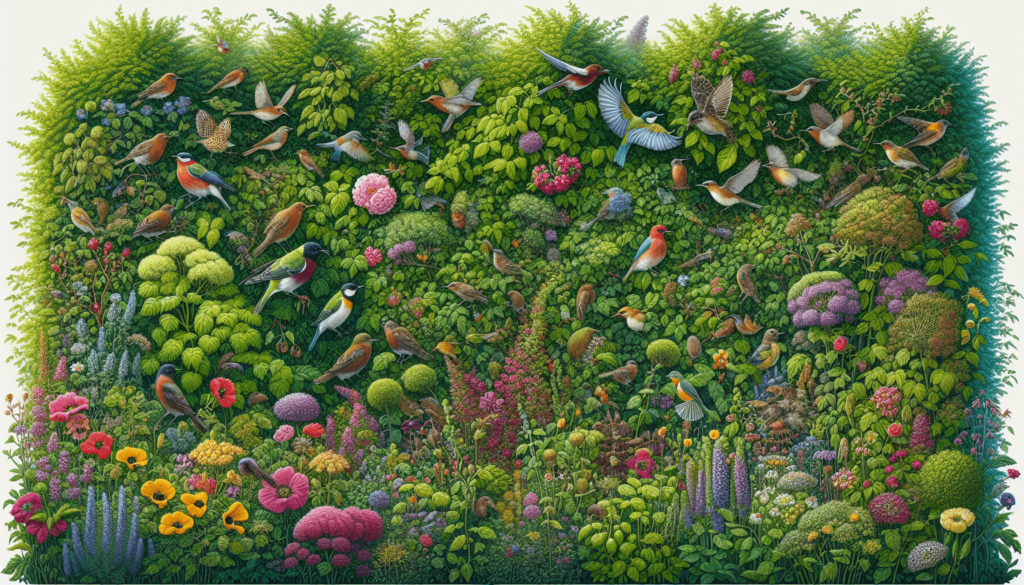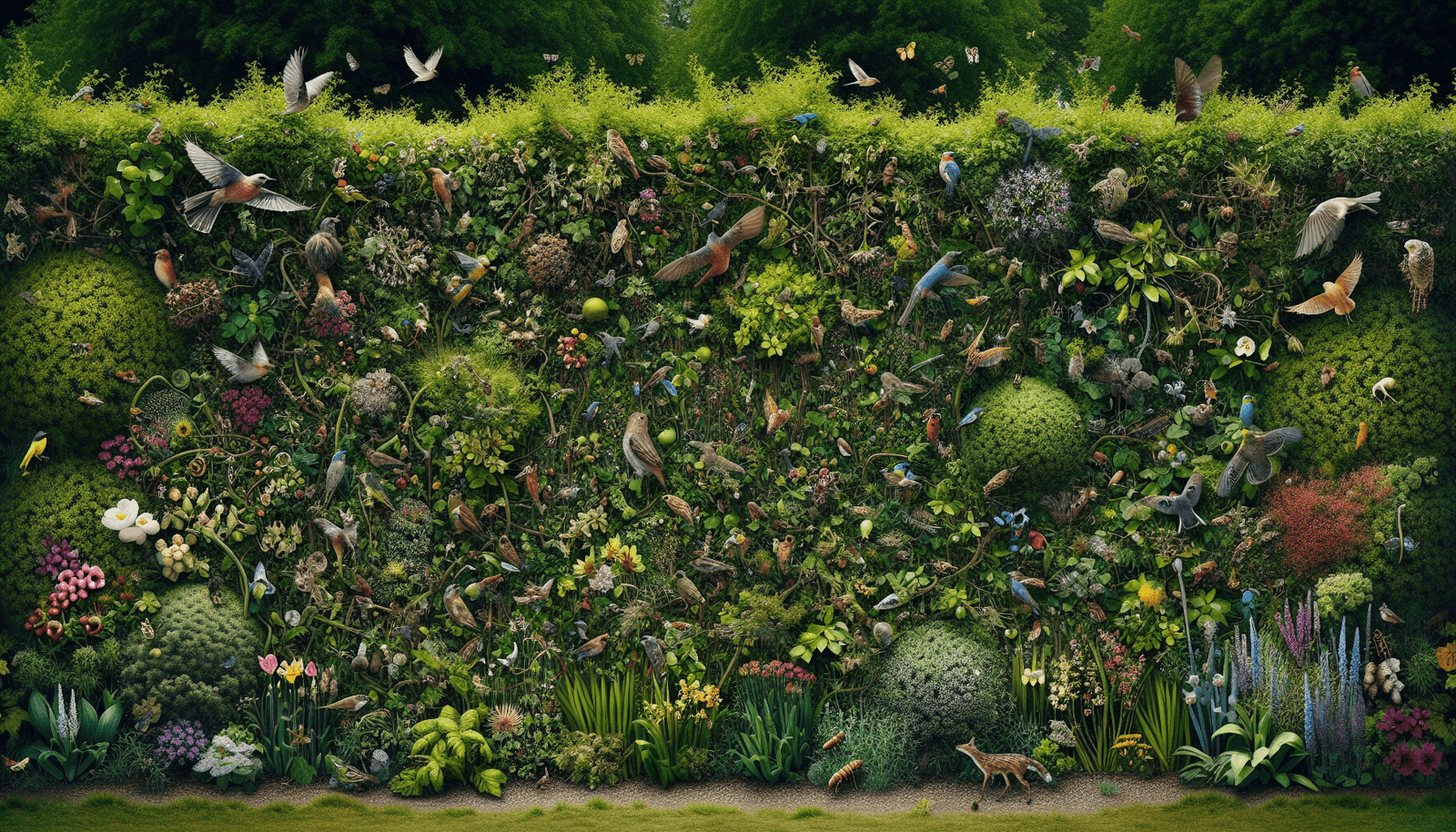Building a wildlife-friendly hedge in your backyard can provide habitat for various animals while also enhancing the beauty of your landscape. Do you want to create a welcoming environment for local wildlife in your outdoor space?

Why Build a Wildlife-Friendly Hedge?
Creating a wildlife-friendly hedge offers numerous benefits for both you and the environment. Not only does it attract a variety of birds, insects, and other creatures to your yard, but it also helps to promote biodiversity. By providing shelter, food, and nesting sites for wildlife, you can enjoy a thriving ecosystem right in your own backyard.
Choosing the Right Plants
When selecting plants for your wildlife-friendly hedge, it’s important to choose species that are native to your region. Native plants are adapted to the local climate and soil conditions, making them more resilient and better able to support local wildlife. Look for plants that provide food, shelter, and nesting sites for a variety of species, such as birds, butterflies, and small mammals.
Native Plants to Consider
Some popular native plant species to consider for your wildlife-friendly hedge include:
| Plant Name | Wildlife Benefits |
|---|---|
| Red Osier Dogwood | Provides berries for birds |
| Serviceberry | Offers food for butterflies |
| Elderberry | Attracts a variety of insects |
| Spicebush | Provides cover for small mammals |
| Arrowwood Viburnum | Offers nesting sites for birds |
Remember to research and select plants that will thrive in your specific growing conditions, such as sun exposure and soil type.

Hedge Design and Structure
The design and structure of your hedge play a crucial role in its ability to support wildlife. A well-designed hedge will provide different layers of vegetation, including a canopy, understory, and ground cover, to offer food and shelter for a variety of species. Varying the height and density of plants within the hedge will create different microhabitats, attracting a diversity of wildlife.
Layered Hedge Structure
Creating a hedge with a layered structure involves selecting plants that grow at different heights and densities. This provides varying levels of cover for wildlife and creates a more complex habitat. Consider incorporating a mix of tall shrubs, medium-sized plants, and ground covers to accommodate different species’ needs.
| Layer | Plant Types |
|---|---|
| Canopy | Tall shrubs or trees |
| Understory | Medium-sized plants |
| Ground Cover | Low-growing plants |
By incorporating a diversity of plant species and structures within your hedge, you can create a more inviting environment for wildlife to thrive.
Providing Food and Water Sources
In addition to shelter, wildlife-friendly hedges should also include food and water sources to attract and support various animals. By planting species that produce berries, seeds, or nectar, you can provide a valuable food source for birds, butterflies, and other creatures. Including a water feature, such as a birdbath or small pond, can also help to attract wildlife to your hedge.
Planting for Food Sources
Select plants that produce fruits, seeds, or flowers that attract wildlife to your hedge. Some plant species that provide food for wildlife include:
| Plant Name | Wildlife Food Source |
|---|---|
| Black-Eyed Susan | Nectar for butterflies |
| Winterberry | Berries for birds |
| Coneflower | Seeds for finches and sparrows |
Planting a mix of species that bloom or fruit at different times of the year can ensure a continuous supply of food for wildlife throughout the seasons.
Providing Water Sources
Water is essential for wildlife, especially during hot and dry periods. Including a water feature in or near your hedge, such as a shallow dish or a small pond, can attract birds, butterflies, and other animals. Be sure to keep the water source clean and refill it regularly to ensure it remains a reliable resource for wildlife.
Maintaining Your Wildlife-Friendly Hedge
Once you’ve established your wildlife-friendly hedge, regular maintenance is key to ensuring it continues to support local wildlife effectively. Proper care and management will help your hedge thrive and provide a safe and welcoming habitat for years to come.
Pruning and Trimming
Regular pruning and trimming of your hedge are essential to maintain its health and structure. Pruning encourages new growth, improves air circulation, and prevents overcrowding. Be sure to trim dead or diseased branches, shape the hedge to maintain its desired form, and remove any invasive species that may threaten native wildlife.
Pest Control
Pests can damage your hedge and negatively impact the wildlife it supports. Monitor your plants for signs of pest infestations, such as holes in leaves or webbing on branches, and take appropriate measures to control them. Avoid using chemical pesticides that could harm wildlife, and opt for natural or organic pest control methods whenever possible.
Weed Management
Weeds compete with your hedge plants for water, nutrients, and sunlight, posing a threat to their health and growth. Regularly inspect your hedge for weeds and remove them promptly to prevent them from overtaking your plants. Mulching around your hedge can help suppress weed growth and retain moisture in the soil.
Seasonal Care
Different seasons require different care practices for your wildlife-friendly hedge. Adjust your maintenance routine accordingly to ensure the health and vitality of your plants year-round. For example, prune your hedge in late winter or early spring to promote new growth, and water it regularly during hot and dry periods to keep it hydrated.
Enjoying Your Wildlife-Friendly Hedge
Creating a wildlife-friendly hedge in your outdoor space can provide countless rewards for both you and the creatures that call it home. By following these tips and guidelines, you can build a hedge that not only enhances the beauty of your landscape but also supports a thriving ecosystem of local wildlife.
Are you ready to start building a wildlife-friendly hedge in your backyard? Embrace the opportunity to connect with nature and make a positive impact on your local environment. By taking simple steps to create a welcoming habitat for wildlife, you can enjoy a vibrant and biodiverse outdoor space right at your doorstep.

